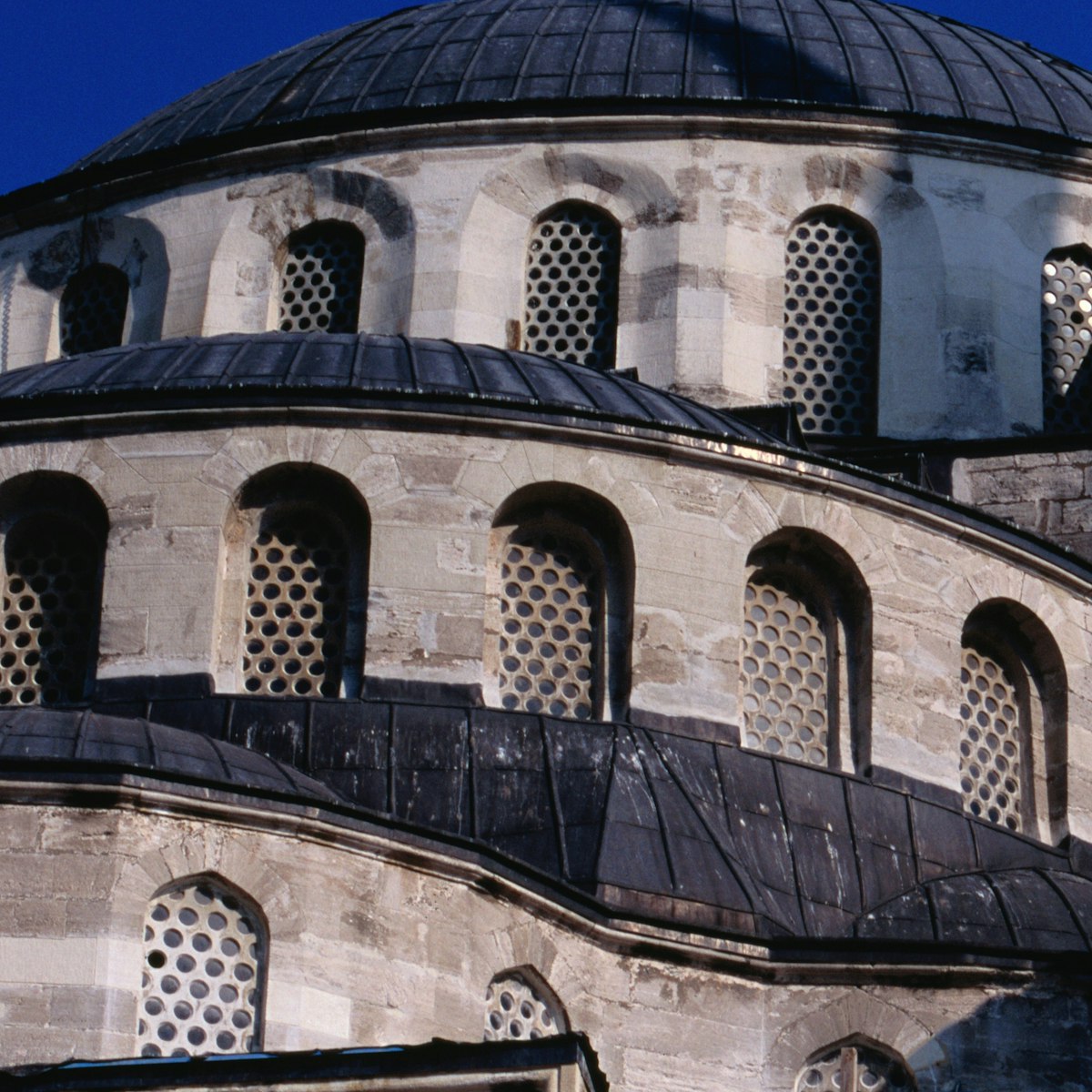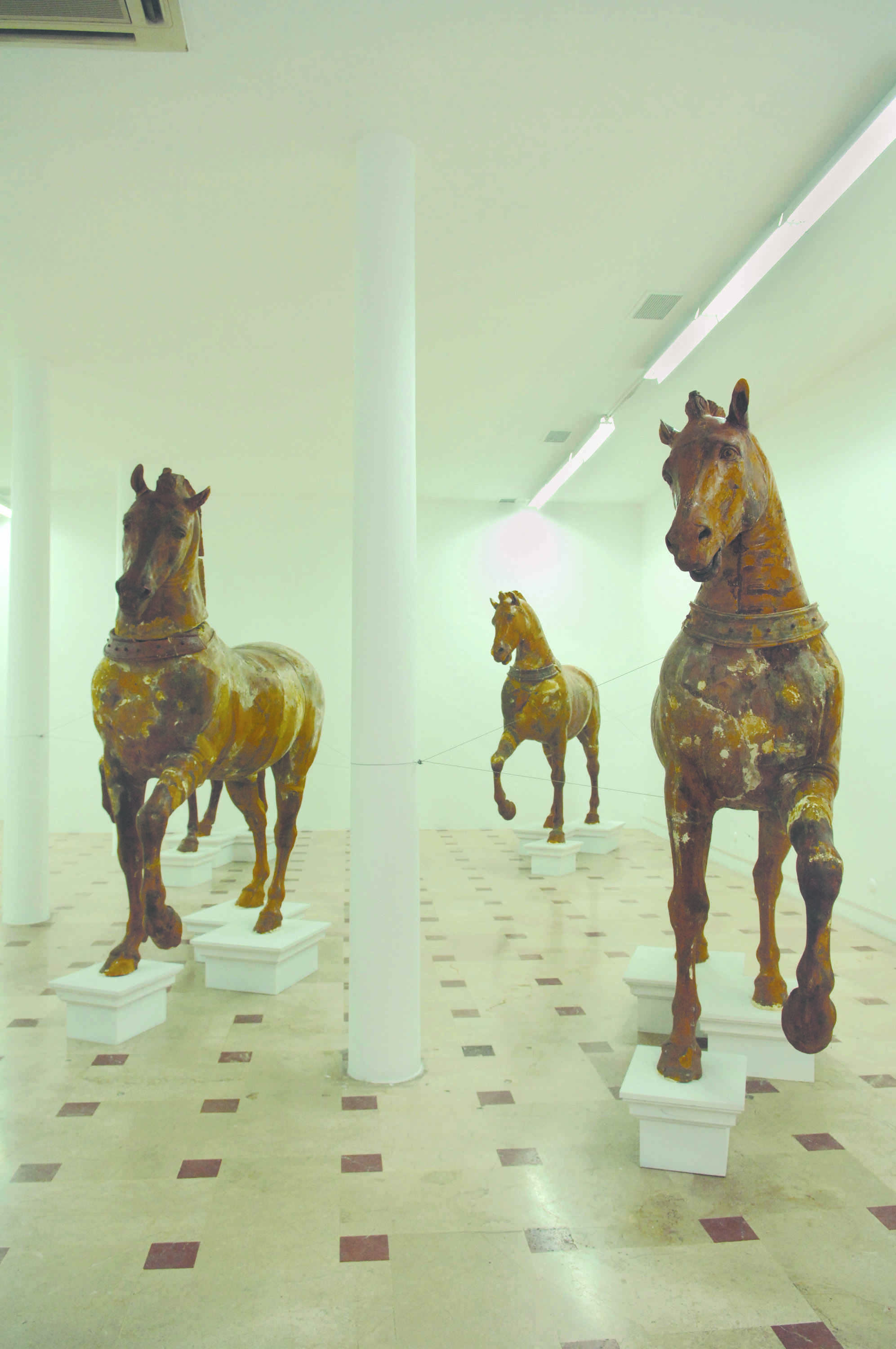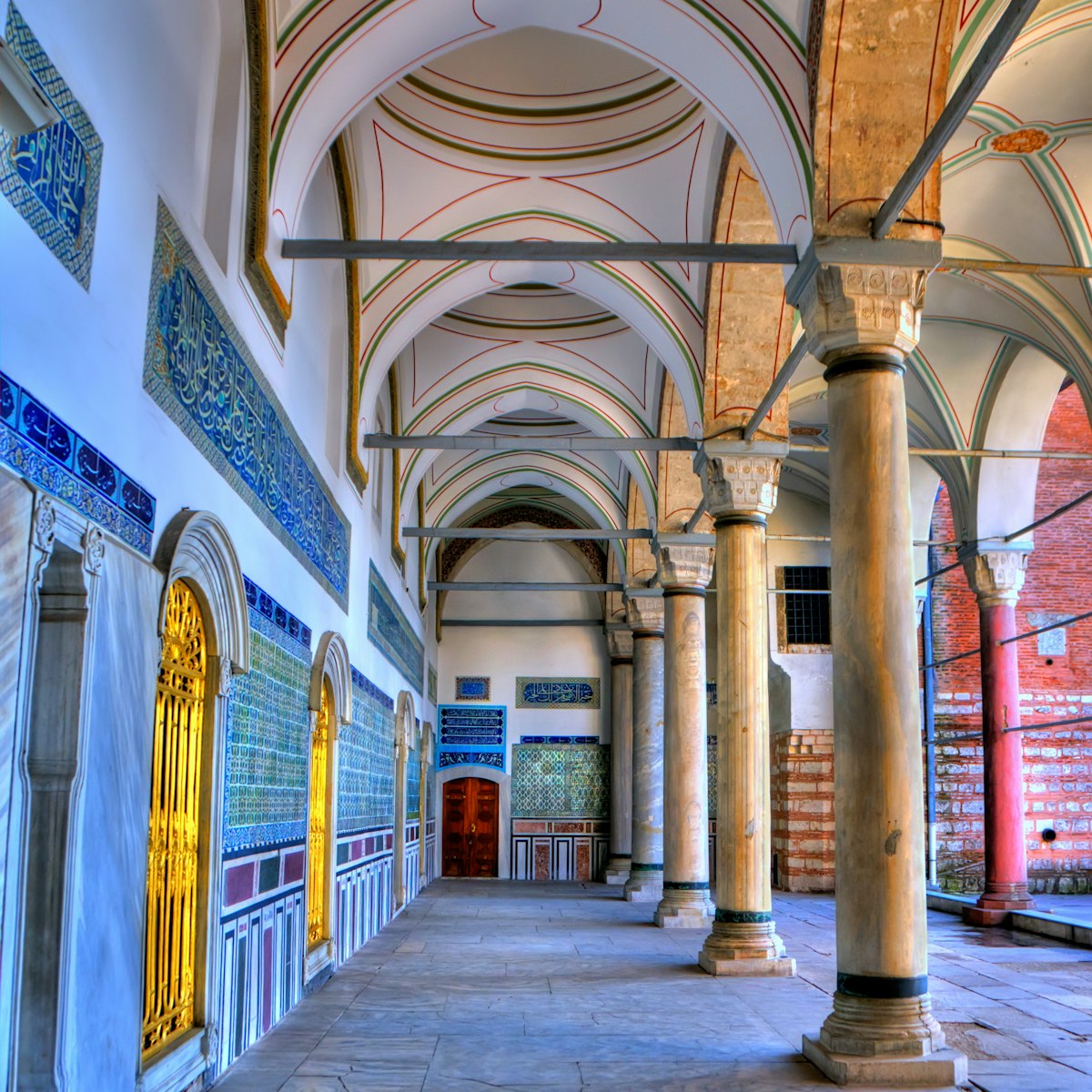Istanbul's Thundering Heart: Unveiling the Hippodrome's Secrets

Importance and historical significance of the Hippodrome in Istanbul
The Hippodrome in Istanbul is of great historical and cultural significance. Dating back to the Roman period, it served as the sporting and social centre of Constantinople, the capital of the Byzantine Empire. The Hippodrome was a venue for chariot races and a gathering place for the public to participate in various events and celebrations.
The Hippodrome was known for its impressive architecture, including the iconic Obelisk of Theodosius, the Serpent Column, and the Walled Obelisk. These structures were brought from different parts of the world and served as monuments of the empire's power and influence.
Background and purpose of unveiling its secrets
In recent years, there has been a growing interest in uncovering and exploring the secrets of the Hippodrome. The purpose is to gain a deeper understanding of the history and culture of Istanbul and the Byzantine Empire.
Archaeologists and historians have been conducting excavations and research to uncover the hidden treasures and stories that lie beneath the surface of the Hippodrome. Through their findings, they aim to piece together the puzzle of the past and provide insights into how the Hippodrome functioned and its significance in the people's daily lives.
The unveiling of the secrets of the Hippodrome will not only enhance our knowledge of Istanbul's history but also contribute to the preservation and conservation of this important heritage site. It will allow us to appreciate and celebrate the rich cultural heritage of Istanbul and ensure that future generations can continue to learn from and cherish this historical landmark.
As the discoveries continue to unfold, the secrets of the Hippodrome are gradually being revealed, shedding light on the grandeur and splendour of the past. This ongoing research and exploration will undoubtedly add to our understanding of Istanbul's fascinating history and the enduring legacy of the Byzantine Empire.
In the next sections, we will explore some remarkable findings and ongoing research related to the Hippodrome. Stay tuned to learn more about the mysteries waiting to be uncovered!

History of the Hippodrome
Origins and construction of the Hippodrome
The Hippodrome in Istanbul has a rich history dating back to the Roman period. It was originally built as the sporting and social centre of Constantinople, the capital of the Byzantine Empire. The construction of the Hippodrome began in the 3rd century AD and underwent significant renovations and expansions over the centuries.
The architects and builders of the Hippodrome took inspiration from the grand arenas of Rome and created an impressive structure with a seating capacity of around 100,000 spectators. The design included two parallel tracks, known as Spina, stretching approximately 450 meters long, with decorative monuments and obelisks placed along its length.
Events and chariot races held at the Hippodrome
The Hippodrome served as a venue for various events and entertainments, with chariot races being one of the most popular and thrilling attractions. These races showcased skilled charioteers who competed for glory and honour. The Hippodrome's vast size and architectural design allowed exciting races that captivated the crowds.
Apart from chariot races, the Hippodrome hosted other events such as athletics competitions, mock naval battles, and theatrical performances. The public could gather to watch these spectacles, fostering a sense of community and unity among the people of Constantinople.
Notable monuments, such as the Obelisk of Theodosius, the Serpent Column, and the Walled Obelisk, adorned the Hippodrome, adding to its grandeur and symbolism. These structures were brought from different parts of the world as a testament to the empire's power and influence.
Today, the Hippodrome continues to be a place of historical and cultural significance. Its excavation and research uncover valuable insights into the past, providing us with a deeper understanding of Istanbul's history and the enduring legacy of the Byzantine Empire.
Stay tuned for the next section, where we will explore some remarkable findings and ongoing research related to the Hippodrome. We will uncover more secrets and unveil the mysteries beneath this ancient site.

Key Structures within the Hippodrome
Overview of the Obelisk of Theodosius
One of the most prominent structures within the Hippodrome is the Obelisk of Theodosius. This ancient monument was erected in the 4th century AD and stands tall at over 20 meters high. The obelisk was brought from Egypt and placed in the spina of the Hippodrome, serving as a symbol of imperial power and showcasing the empire's wealth and influence.
The Obelisk of Theodosius is made from red granite and is adorned with intricate carvings and inscriptions. It is believed to have originally been built during the reign of Pharaoh Thutmose III in the 15th century BC. The Byzantine Emperor Theodosius I later acquired the obelisk and had it transported to Constantinople, where it remains.
This remarkable structure has survived centuries of history, witnessing the rise and fall of empires. It serves as a reminder of the grandeur and opulence of the Byzantine Empire and continues to fascinate visitors with its intricate details and historical significance.
Exploration of the Serpent Column
Another notable structure within the Hippodrome is the Serpent Column, which has an intriguing history rooted in ancient Greek mythology. This bronze column consists of three entwined serpents and was originally part of a larger monument called the Tripod of Plataea.
The Serpent Column was brought to Constantinople as a spoils of war after the victory of the Greeks over the Persians in the Battle of Plataea in 479 BC. It is believed to have stood in the Delphi sanctuary, dedicated to the Greek god Apollo, before being relocated to the Hippodrome.
Over the centuries, the Serpent Column has witnessed numerous historical events and has been subject to modifications and damage. Today, only a fragment of the original structure remains. Still, it continues to serve as a testament to the ancient Greek civilization and the historical ties between different cultures and civilizations.

The Walled Obelisk
History and Significance of the Walled Obelisk
Another remarkable structure within the Hippodrome is the Walled Obelisk. This impressive monument dates back to the 10th century AD and stands as a testament to the architectural prowess of the Byzantine Empire. Constantine VII built the Walled Obelisk, originally covered in bronze plaques, showcasing intricate designs and portraying scenes from the imperial court.
The Walled Obelisk was built as a replacement for the original obelisk of Theodosius, which had been damaged by lightning. It served as a symbolic representation of the Byzantine Empire's authority and continued the tradition of displaying grand obelisks within the Hippodrome.
Intricate carvings and inscriptions on the Obelisk
The Walled Obelisk is adorned with beautiful carvings and inscriptions that provide insights into the cultural and religious beliefs of the Byzantine Empire. The plaques that once covered the obelisk depicted various scenes, including religious processions, triumphal processions, and imperial ceremonies.
Although the bronze plaques have long been lost, some fragments have been recovered, giving us a glimpse into the exquisite craftsmanship of the time. These remnants feature detailed carvings of animals, mythological figures, and intricate patterns, showcasing Byzantine artisans' artistic skills and attention to detail.
Overall, the Walled Obelisk holds great historical and artistic significance within the Hippodrome. It stands as a testament to the architectural achievements of the Byzantine Empire and offers a glimpse into the grandeur and opulence of the time. The intricate carvings and inscriptions on the obelisk provide valuable insights into the cultural and religious beliefs of the Byzantines, making it a fascinating structure to explore.

The Bronze Serpent Heads
Mystery and symbolism behind the Serpent Heads
Step inside the Hippodrome, and you will come across yet another intriguing structure – the Bronze Serpent Heads. These unique artefacts have sparked curiosity and fascination among visitors for centuries. Dating back to ancient times, the symbolism behind these serpent heads remains a mystery that continues to captivate the imagination.
The serpent heads were crafted from bronze, a highly valued material often associated with power and prestige. The snakes, with their menacingly open mouths, were believed to hold special significance in various cultures. Some theories suggest they represent protection and guardianship, while others believe they symbolize fertility and rebirth. Regardless of their specific meaning, the presence of these serpent heads in the Hippodrome serves as a reminder of the diverse beliefs and deep symbolism that characterized the ancient world.
Possible theories and interpretations
As with many ancient structures, several theories surround the purpose and significance of the Serpent Heads. Some speculate that they served as decorative elements, enhancing the grandeur of the Hippodrome and adding to the overall spectacle of the chariot races and other events that took place there. Others believe that the serpent heads were used in religious rituals or ceremonies, possibly as offerings to deities or symbols of divine protection.
While their exact meaning may never be fully known, the Bronze Serpent Heads continue to ignite curiosity and spark discussions among historians, archaeologists, and visitors alike. The mystery surrounding these intriguing artefacts adds to the allure and appeal of the Hippodrome, drawing in those who seek to unravel the secrets of the past.
The Bronze Serpent Heads within the Hippodrome remain an enigma, alluring visitors with mysterious symbolism. Whether they represent protection, fertility, or something entirely different, these ancient artefacts hold a certain allure that speaks to the rich history and cultural significance of the Byzantine Empire. Exploring the Hippodrome allows us to delve into the intricate world of symbolism and interpretation, inviting us to appreciate the depth of ancient beliefs and the artistic mastery that once flourished within these walls.

Unearthing the Secrets
Archaeological findings and discoveries at the Hippodrome site
You are transported back to a bygone era when you step into the Hippodrome. This historic site has been a treasure trove of archaeological findings and discoveries, shedding light on the lives and culture of the Byzantine Empire. Excavations at the site have unearthed fascinating artefacts that give us glimpses into the past.
The Bronze Serpent Heads, with their mysterious symbolism, are just one example of the intriguing findings at the Hippodrome. These unique artefacts have captured the attention of historians, archaeologists, and visitors alike. They stand as a testament to the artistry and symbolism that characterized the ancient world.
Excavation process and challenges
The journey of uncovering the secrets of the Hippodrome has not been easy. Excavating this site poses numerous challenges, from navigating the complex layers of history to preserving delicate artefacts. Archaeologists have painstakingly worked to uncover and document each discovery, employing various techniques to preserve the artefacts.
One of the main challenges faced during the excavation process is the sheer size and scope of the site. The Hippodrome was a sprawling complex, and excavating every corner required time, resources, and meticulous planning. Additionally, the site's history spans centuries, with layers of structures built upon one another. This makes it essential for archaeologists to carefully remove each layer, documenting the discoveries as they progress.
Preserving the uncovered artefacts is another crucial aspect of the excavation process. The delicate nature of ancient relics requires special care and attention. Archaeologists implement techniques such as cataloguing, conservation, and restoration to protect these invaluable pieces of history for future generations to appreciate.
The ongoing excavation and discoveries at the Hippodrome site offer us a glimpse into the rich history of the Byzantine Empire. Through the dedication of archaeologists and the fascination of visitors, we can uncover the secrets hidden within this ancient site. So, next time you visit the Hippodrome, take a moment to appreciate the untold stories and wonders beneath your feet.

The Hippodrome Today
Transformation and preservation efforts
When you step into the Hippodrome, you are stepping back in time and witnessing the transformative efforts that have preserved this historical site for generations to come. The ongoing excavation and discoveries have paved the way for preserving the rich history of the Byzantine Empire.
Archaeologists and conservation experts have worked tirelessly to ensure the Hippodrome remains accessible and protected. Through careful planning and implementation, the site has undergone restoration and transformation. The aim is to accurately depict the grandeur and splendour of its ancient days while providing visitors with a safe and engaging experience.
Preservation efforts also extend to the unique artefacts found at the Hippodrome. The delicate Bronze Serpent Heads and other significant discoveries are meticulously conserved and displayed for the public to appreciate. These artefacts tell stories of the past, shedding light on the cultural and artistic achievements of the Byzantine Empire.
Current state and accessibility to the public
The Hippodrome, once a bustling centre for chariot races and other public events, is a captivating destination for visitors today. The site has been well-maintained, ensuring a safe and immersive experience for all who visit.
Visitors have the opportunity to explore the vast grounds of the Hippodrome, gaining insights into the grandeur of its past. Interpretive signage and guided tours provide valuable information about the site's history, archaeological findings, and cultural significance.
Accessibility has also been a priority in ensuring that people of all abilities can enjoy the Hippodrome. Wheelchair ramps and accessible pathways have been installed to make the site inclusive and welcoming for everyone.
Whether you are an archaeology enthusiast, a history buff, or simply someone fascinated by the mysteries of the past, a visit to the Hippodrome promises to be an enlightening and memorable experience. The site's transformation, preservation efforts, and accessibility make it a must-visit destination that offers a glimpse into the rich history of the Byzantine Empire.

Cultural Impact
Hippodrome's influence on the city of Istanbul
The Hippodrome holds immense cultural significance for the city of Istanbul. It served as a central hub for entertainment and social gatherings during the Byzantine era, attracting people from all walks of life. The chariot races held at the Hippodrome were thrilling spectacles and opportunities for the Byzantine emperors to showcase their power and wealth.
Today, the Hippodrome continues to shape the city's identity and character. It's historical importance and architectural splendour make it a symbol of Istanbul's rich heritage. Visitors can witness the blending of Byzantine and Ottoman influences in the surrounding buildings and landmarks, creating a unique cultural fusion characteristic of Istanbul.
Celebrations and events held at the Hippodrome
The Hippodrome has not lost its role as a gathering place for celebrations and events. Festivals, concerts, and cultural performances are often held within its grounds, breathing new life into this ancient site. These events allow locals and tourists alike to experience the vibrant spirit of Istanbul while being transported back in time.
One notable event held at the Hippodrome is the annual Istanbul Music Festival. This prestigious event attracts renowned musicians and performers worldwide, turning the Hippodrome into a stage for unforgettable musical experiences.
